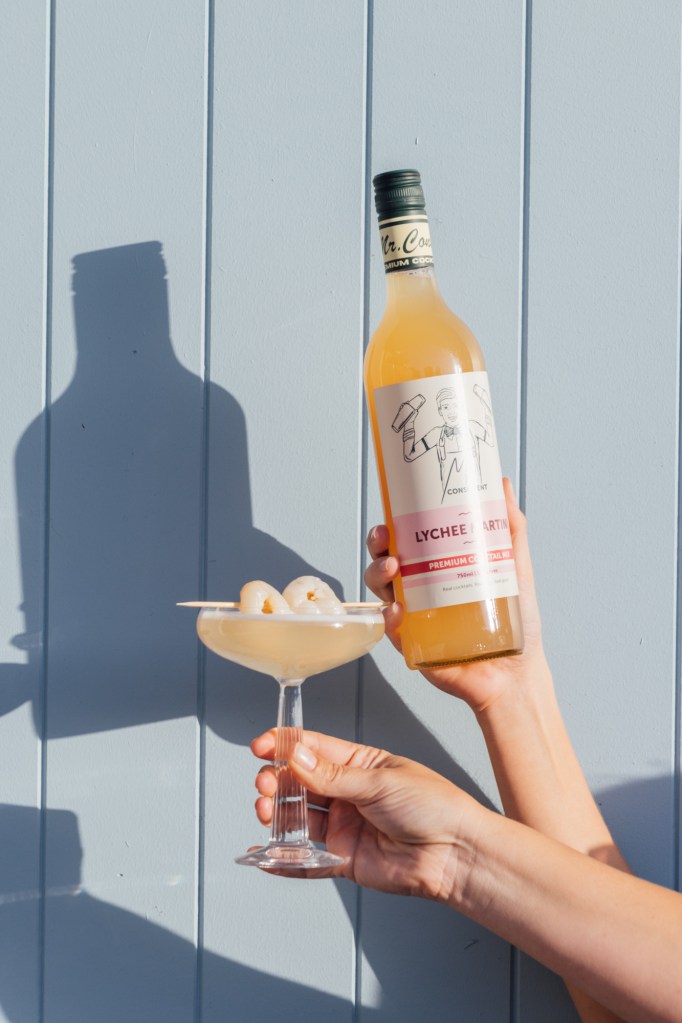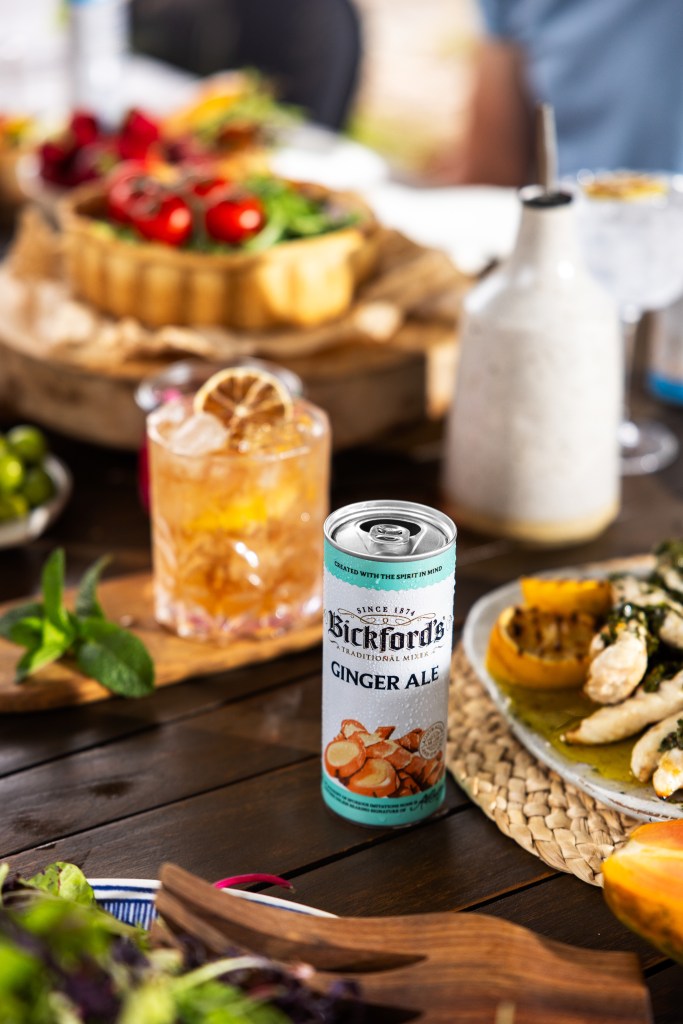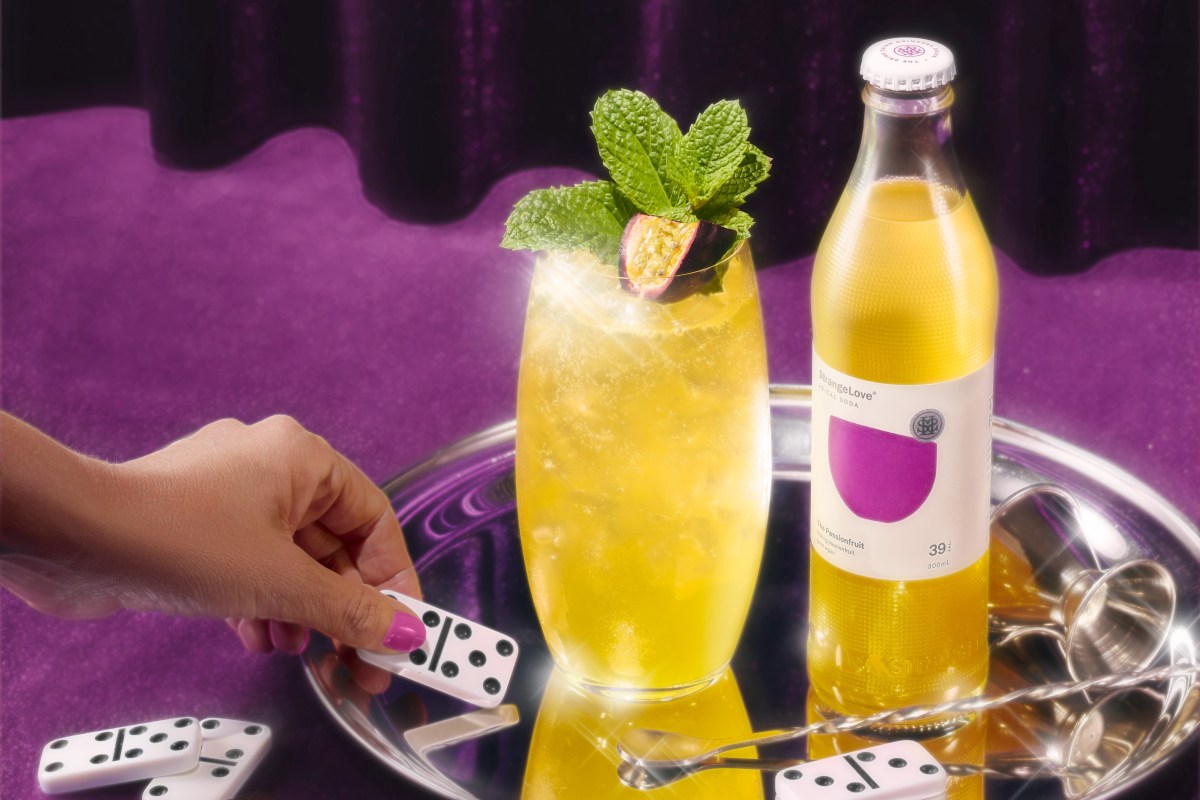The rise of at-home drinking during the pandemic saw consumers become more discerning about their drink choices – elevating the off-premise experience with not only premium spirits, but premium mixers.
No longer an afterthought, mixers quickly became a crucial component in crafting high-quality drinks at home, and in the years since Covid, this trend has continued. Now, premium mixers have solidified their place as an essential category in liquor retail, says Caitlin Lockie, Strangelove’s Brand Manager.
“In the past 12 months, we have found that there has been increased interest and volume coming from liquor and mainstream retail, especially over this past summer entertaining period,” she explained.
With consumers now expecting more from the category, growth is driven by demand for quality, convenience and unique flavour experiences. As a result, innovation in this space has introduced a wave of new styles, and more than ever, versatility is key.
Chris Illman, Head of Sales and Group Marketing for Bickford’s Group, says: “Consumers are seeking craft-inspired mixers with natural ingredients, lower sugar options, and functional benefits that enhance both alcoholic and non-alcoholic serves. Additionally, sustainability in packaging and ingredients continues to influence purchasing decisions, making eco-friendly and locally-sourced options more appealing.”
With many seeking low-calorie, low-sugar and low-alcohol alternatives to their favourite beverages, health-conscious consumers are reshaping the category, presenting an opportunity for liquor retailers to continue to drive sales while alcohol consumption declines.
Lockie added: “With the growing interest in no- and low-alcohol options and consumers drinking less, but drinking better, this segment has become a very important sales channel for our brand and has seen significant growth compared to previous years.”
Flavour-forward
In the US, premium mixer penetration is much more diverse across mixer subcategories, and as Steve Carr, Trade Marketing Manager at Fever-Tree, outlines, this presents an opportunity for Australia to follow suit.
“In Australia, the premium mixer category has predominantly consisted of tonic water. There is significant opportunity ahead for premium mixers beyond tonic water, such as in sodas and dark spirit mixers,” he explained.
Kate Solly, Sales & Marketing Director at Capi, agrees that the market for tonic water remains significant, but notes a growing preference for more flavour-forward options.
“Our Sunset Tonic, featuring grapefruit and blood orange notes with a hint of lake salt, is gaining popularity – not just with gin but also with vodka and tequila. At the same time, citrus and fruit-based mixers are thriving, driven by tequila’s rising popularity.”

Illman added: “During the warmer months, consumers gravitate towards refreshing, lighter mixers, with citrus, tropical, and berry flavours being especially popular.
“As the cooler months arrive, the focus shifts to richer, spiced, and dark fruit flavours, which pair well with darker spirits like whisk(e)y and rum. Traditional and nostalgic flavours continue to resonate, as consumers seek comfort and balance in their mixer choices.”
Kahrissa Bell, Chief Brand Officer at Mr Consistent, shares a similar sentiment on the thread of nostalgia emerging, observing a nod to the 90s and early-2000s in many cocktail recipes resurfacing today. And despite the growing preference for lighter beverages, she says demand for indulgent cocktails and unique flavours isn’t slowing down.

“Highlighting one cocktail flavour trend we have seen come through more and more would be customers searching for a savoury/umami-style cocktail balance; whether simply because they are intrigued – who doesn’t want a Tomato Margarita – or because they are chasing the salty, savoury and new flavour profile.”
Cocktails – whether at home or in bars – are still ultimately about enjoyment, and with experience remaining a key driver in this segment, the opportunity for liquor retailers lies in selling the full cocktail experience.
“We’ve always focused on selling a lifestyle to the consumer, rather than simply a bottle of Margarita Mixer – and showcasing this method of thinking is key to increasing overall sales,” added Bell.
“Showcasing a stand or area that can show the consumer more than only cocktails, with accompanying premium glassware, garnish, barware kits and even table-styling offerings is key to high average order value.”
The economical trade-up
Despite economic pressures, consumers remain willing to invest in premium mixers, but rising costs are influencing the formats they choose to buy, and larger, multi-serve formats are gaining popularity as a more economical option.
Solly says: “Notably, we’ve seen a significant shift toward large-format offerings, with our 750ml mixers experiencing faster growth than the 4-pack 250ml options. This move toward larger formats not only enhances the premium drinking experience but also provides an accessible price point – making it easier for customers to trade up from value brands without compromising on quality.”
Great spirits need great mixers
While the increased appetite for no- and low-alcohol beverages has seen mixers gain traction as the main event, category performance is still heavily influenced by the trends unfolding in the spirits and cocktail categories.
“When developing new flavour combinations, we look at spirits first and what’s growing in popularity and think, what would we want to drink with it? What is a little different and unexpected that no one else offers,” Lockie stated.
While Lockie says the flooding of the craft gin space has pushed consumers back to more traditional styles of gin – which makes a great case for the classic G&T – she also highlights the rise of Highballs as a simpler approach to cocktails.
“Highballs offer the perfect solution for those wanting more than a G&T, but don’t want to go out and buy multiple ingredients or go through the effort to make a cocktail.”
Another of the trends in the spirits category to impact premium mixers is premiumisation. With consumers increasingly seeking mixers that match the quality and craftmanship of the spirits they’re enjoying, this trend is encouraging shoppers to trade up.
Lockie added: “In our experience, it’s becoming more and more apparent to consumers that if you’re going to buy a $100 bottle of spirits, it’s worth your while to spend a few more bucks on a premium mixer. It’s our job to educate the market on the significant difference a premium mixer can make to the overall drink and justify our price point.
“We have found that teaming up with craft spirit brands and displaying simple pairings at a POS level guides the consumer on the importance of choosing the best mixer.”
Solly agrees that where consumers invest in premium spirits, they are seeking mixers that complement and enhance the spirit’s flavours, particularly when hosting.
“Consumers are most willing to trade up to premium mixers when entertaining, as they aim to recreate a high-quality bar experience for their guests. When hosting, presentation, and taste matter, it makes premium mixers an easy choice to elevate their drinks,” she explained.

Above all, consumers are leaning into convenience, and although supermarkets have a strong share of the market, the complementary nature of spirits and mixers gives liquor retailers a competitive edge. While the complete spirit-and-mixer category solution creates a cohesive shopping experience, it’s also a strategic way to increase basket spend.
“By strategically pairing mixers with spirits and cocktail ingredients, retailers can help customers create complete drink solutions, drive impulse purchases and offer opportunities to upsell,” says Illman.
Illman also sees refrigeration as an opportunity for liquor retailers to differentiate themselves and compete with supermarkets.
“Placing premium mixers in the fridge reinforces the premium message of the category, offering consumers a convenient, high-quality option that supermarkets can’t match. Refrigeration enhances the perception of freshness and quality, making it easier for consumers to create the perfect drink solution.
“This not only drives impulse purchases but also provides a level of service that supermarkets can’t offer, positioning liquor retailers as the go-to destination for a complete, elevated drinking experience.”
Whether consumers are looking for low-sugar options, alcohol-free alternatives or indulgent cocktail mixers, premium mixers are central to the drinking experience. From complete spirit-and-mixer solutions to education around drink pairings, liquor retailers have a crucial role to play in the continued growth of the premium mixer category.
Encouraging consumer education
Education is important in any category, but Carr says for consumers to willingly invest in premium mixers they must have enough knowledge to confidently recreate the serves they see in-store or on-premise, at home.
“Last year, Fever-Tree launched our Perfect Store program, which encompassed a permanent freestanding display unit for retail stores along with educational components on simple serves and how to mix. We’ve seen increases in spirit-and-mixer combination sales in the 200+ stores executing the program in year one – exceeding 30 per cent ROS compared to previous.
“If retailers are interested in joining the program or want advice on how to do something, we’re always happy to give guidance as the category captains,” he stated.
Lockie added: “From a retailer perspective, it’s about us working with them, to give retailers the educational tools and inspiration to then pass onto their customers. Whether that be point-of-sale executions with simple pairing suggestions, staff training sessions, investing in in-store tastings or providing recipe inspiration, we can assist retailers to navigate how to sell the products.”
This feature was first published in the April-May edition of National Liquor News, which you can view below.

